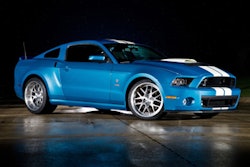OAKLAND, Calif. (AP) -- Tests have discovered hydrogen in some of the damaged steel rods on the new eastern span of the San Francisco-Oakland Bay Bridge, an indication of weakness in the metal, state transportation officials said Thursday.
The California Department of Transportation said officials originally discovered that 32 of the 96 rods that have been tightened on the $6.4 billion span snapped two weeks ago.
The rods, which are essentially giant bolts, are being used to connect steel earthquake safety devices called shear keys to the bridge's deck and a large concrete cap.
The bridge, which is replacing the span damaged during the 1989 Loma Prieta earthquake, is designed to withstand a major temblor.
Caltrans officials acknowledged there is a risk that the problem could delay the bridge's opening over Labor Day weekend. Still, the agency says the project is currently on track.
One of the tricky issues is that some of the failed bolts are located beneath a cement cap and cannot be easily removed, said Will Shuck, a Caltrans spokesman.
"There is not enough room to lift them out, so you can't replace them," Shuck said. "They are working on an engineering solution for those bolts."
The company that made the pieces that failed is Painesville, Ohio-based Dyson Corp. Shuck said the company has been "cooperative and helpful" with Caltrans' investigation.
Caltrans is focused on fixing the problem and said it will determine who is financially responsible for the bolts' failure after repairs are finished and the costs are known.






















